If your fruit trees are growing properly this spring, you should be seeing growth like this (above) on your trees.
Related Articles
Taming monster fruit trees with renovation pruning
Learn how to use a technique called renovation pruning to tame large, unpruned, and out-of-control monster fruit trees.
What broke my fruit tree?
Broken fruit trees can be caused by animals eating them, or accidental damage. Identifying the animal is the first step to prevention.
3 simple ways to improve your soil
Here are 3 simple ways to kickstart the health of your soil to help you grow fruit that is full of vitamins and minerals.
This time of year you should expect to see a flush of strong, healthy new growth in your trees, particularly on young trees.
Successful fruit growing is all about helping the tree to balance its energy between growing new wood and growing fruit. If it grows too much of one, it tends not to grow much of the other.
Why is it important if your fruit trees are growing properly?
Your tree needs the new wood so that new buds are continually being formed to produce next year’s fruit. In some types of trees, the buds will also form on older wood.
But you don’t want the tree to put too much energy into growing wood at the expense of putting its energy into growing fruit. Like so many things to do with fruit growing, it’s a balancing act.
Shoot length is one of the best indicators of the overall health of your tree, and spring is the time to monitor it, so visit your trees and have a look.
It’s also a great way to check in on the health of your soil and your nutrition program. Lack of growth in spring is one of the first signs that they may not be up to scratch.
What does “properly” mean?
If you see plenty of young vigorous shoots (anything from a few cm to 1 m long) you know the tree’s pretty happy. Shoot growth in spring will often depend on the type and age of the tree.
And if you’ve done a great job with your pruning, you’ll also notice that the new shoots are growing in the right place in the tree to make future fruit picking easy and manageable.
How to monitor different tree types for healthy growth
Here’s what healthy spring growth looks like in cherries:
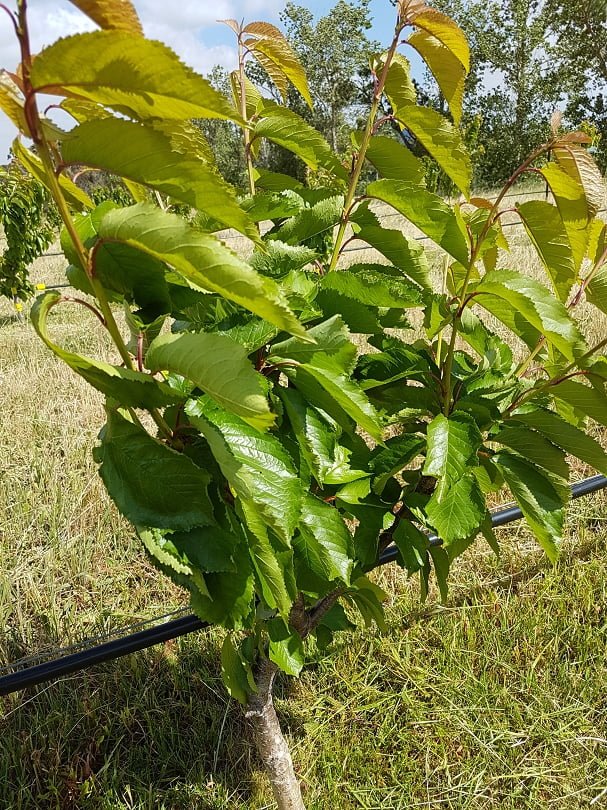
On a young plum tree…
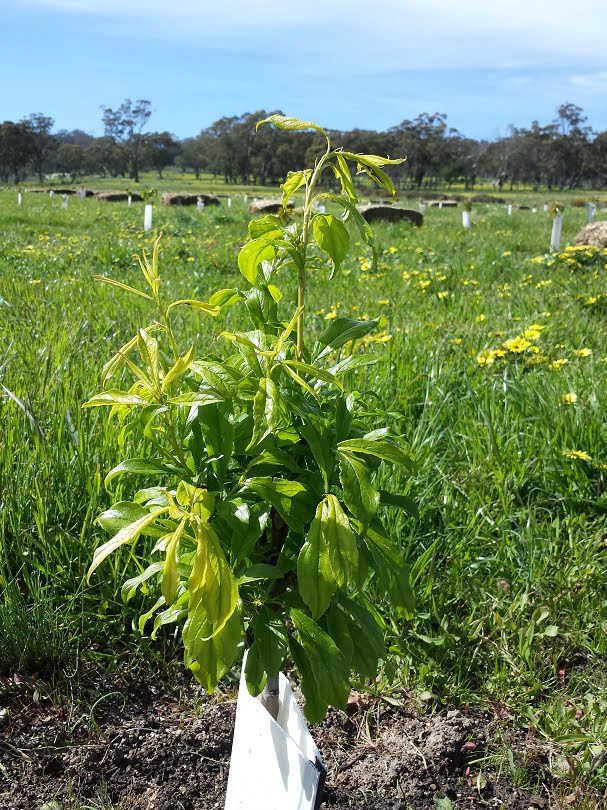
On a mature plum tree.
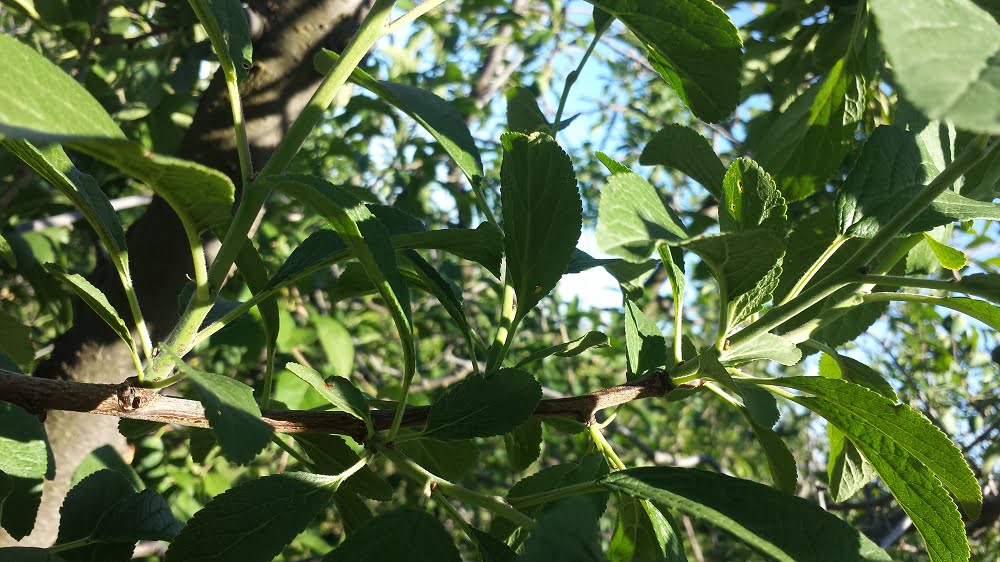
And finally, a mature apricot tree that’s growing beautifully (below).
Note the beautiful red colour of the fresh new growth, which will gradually fade through orange to green as the leaves mature.
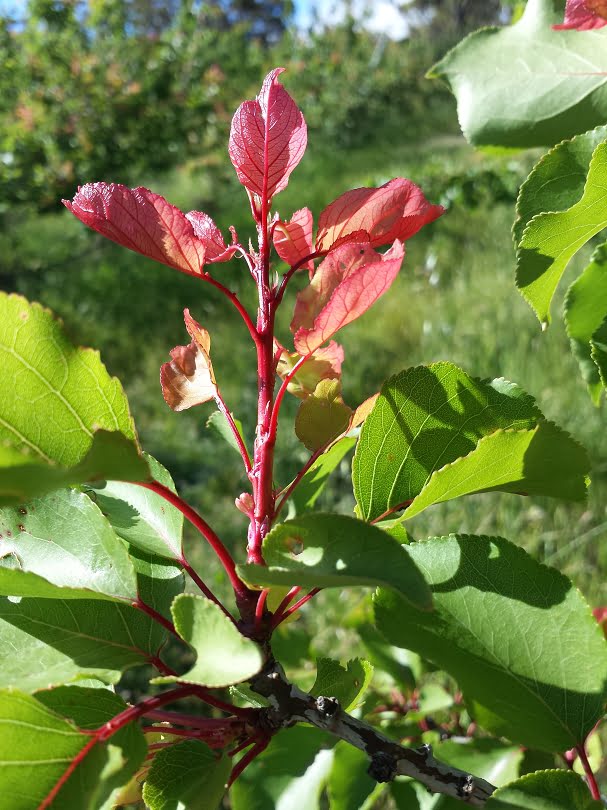
What if my trees don’t look so good?
Sometimes, for various reasons, the leaves on your trees will not look healthy and glowing. They may have holes, diseases, or mysterious and curious markings on them.
Many times, there’s nothing to worry about. Occasionally however unhealthy looking leaves can be symptomatic of a nutritional problem, which may need a diagnosis and some prompt remedial action.
Related Articles
Taming monster fruit trees with renovation pruning
Learn how to use a technique called renovation pruning to tame large, unpruned, and out-of-control monster fruit trees.
What broke my fruit tree?
Broken fruit trees can be caused by animals eating them, or accidental damage. Identifying the animal is the first step to prevention.
3 simple ways to improve your soil
Here are 3 simple ways to kickstart the health of your soil to help you grow fruit that is full of vitamins and minerals.

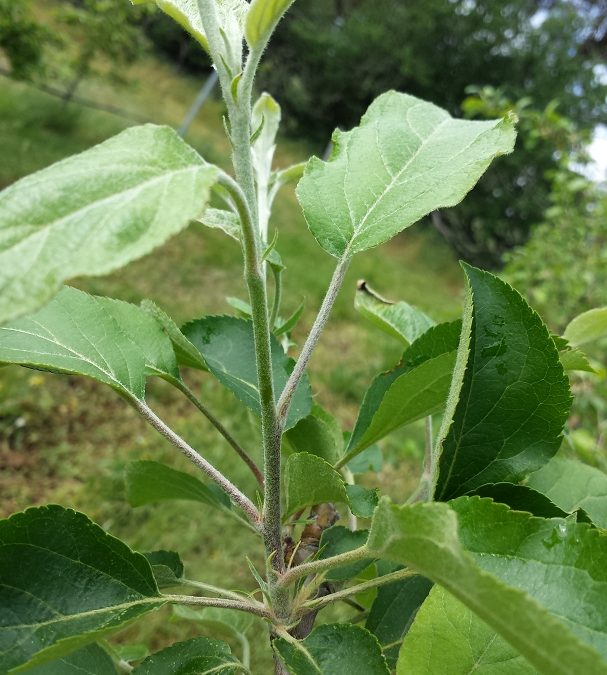
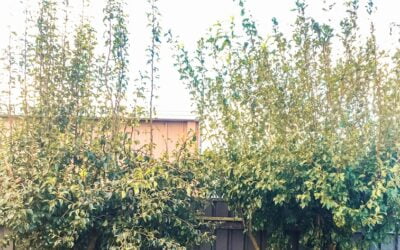


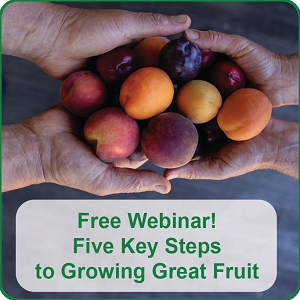
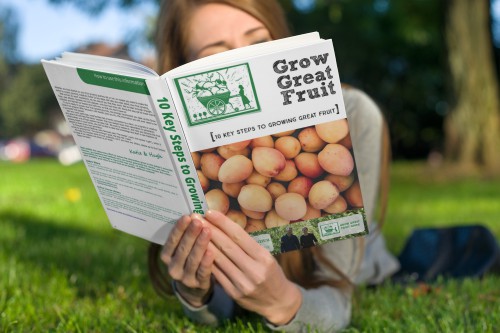
When is the best time to trim the new long spring growth?
Hi Jenny, it depends why you’d be pruning it. If your tree is young and still in the “establishment pruning” stage you could prune the tree to help create new branches in the right places, however you run the risk that you’ll stop the tree growing for this season – the earlier you do it the better, and if the tree responds well and keeps growing, you can effectively get two season’s growth in one year using this technique. For mature trees we wouldn’t normally prune this spring growth at all.
I have lace bugs on my olives. Can’t spray them all with eco-oil. What should I do.
Hi Gillian, good to hear you’re not planning to spray them all with eco-oil, as it’s possible to do more harm than good. Are they doing any actual damage to the olives or trees? In our experience there’s no point trying to get rid of pests that aren’t causing damage. Have you done our pest and disease webinar? It’s free, and explains our approach to organic control of all pests and diseases – https://growgreatfruit.com/pest-and-disease-webinar/
Water shoots are already well on their way and every year they grow really long and tall, like a couple of meters or so long. Do you remove them early before they get so long?
There’s a new pest in this area for our apple trees – myriads of green aphids on the leaves of new growth. I thought of spraying them with agricultural soap when I can get some. Or I could use oil, couldn’t I? Which would you recommend?
Hi Robyn,
It depends a bit on the tree (i.e. what type, how you’re trying to structure it) and where the water shoots are in relation to the structure of the rest of your tree. If the water shoots are up really high or in a problematic spot in the tree, you could thin them or remove them. Alternatively they might be beneficial limbs for your tree so you may decide you want to keep them.
As for the green aphids – aphids will be loving all the moisture at the moment. Our first question with something like aphids is whether it’s actually doing any damage to the tree? If it’s not and you feel like you can wait, you might find that predators come along pretty soon and rebalance a population explosion. We do have a blog all about aphids if you’d like to read more! Meg – GGF team.
My self down nectarine is in trouble this year came home to find curl leaf very well established– hadn’t sprayed with copper sulphate after leaf fall but it was so bad I sprayed immediately then leaves went black & most of fruit withered & dried up. Blossoms were multiple this year but too much wet & cold in Adelaide. Nursery advised gypsum which I have done but more heavy rain. Will it survive– so disappointed
Hi Rae, there’s no reason why it won’t survive! Lots of trees having trouble with leaf curl. Have you tried pinching off some of the curled leaves? A summer prune when things dry out might help your tree bounce back well next year – we have a blog on that, https://growgreatfruit.com/summer-pruning/ along with some short courses linked there to get started. Meg – GGF team.